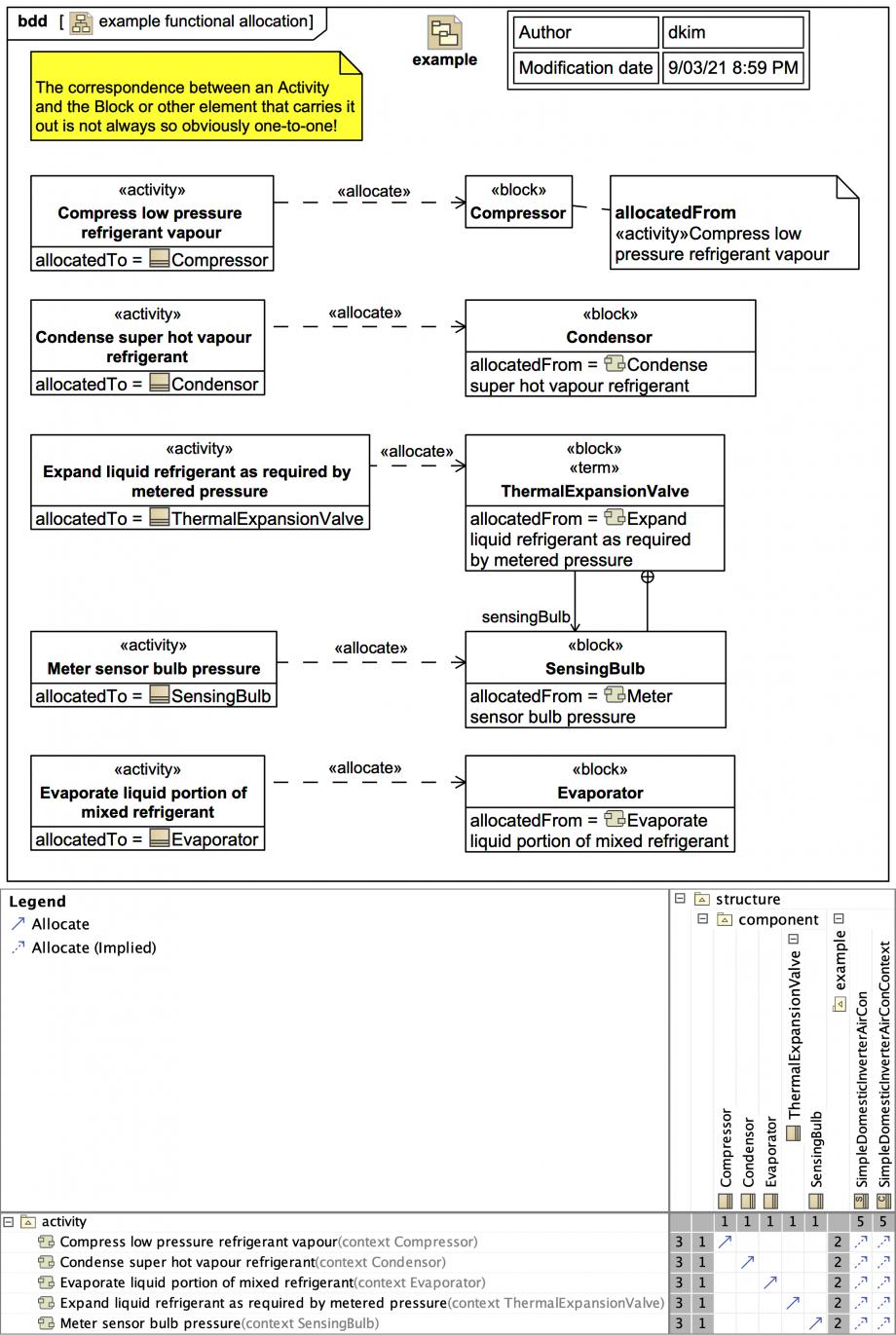Tags and keywords
In the example here, Classifier-level allocation has been used (one could also use Action to Property allocation).
In addition to the «allocate» relationship arrows, the items Activities each Block is allocated to has been listed in a compartment symbol on each Block, and the Block each Activity has been allocated from is either listed in a Note callout, or in a symbol compartment - just to show that this can be done in MagicDraw/Cameo using the Edit Compartments context menu feature.
Typically, a system does not have such simple one-to-one correspondence between the functional domain and the physical domain.
If you are systems engineering purist with eagle eyes, you might have noticed that each of those Activities has the Block it has been allocated to now set also as its 'context':
A word on Activity naming
If you have attended our SysML course, or if you follow our online tutorials, you'll know that in Webel Best Practice sometimes the names of model elements are included in Activity names:
The general Webel Best Practice naming guide for Activities is:
Consider for example these Activities, which used natural language naming with a capital first letter for a non-SysML audience:
Compress low pressure refrigerant vapour
Evaporate liquid portion of mixed refrigerant
Compress low Pressure RefrigerantVapour.
Evaporate liquid portion of mixed Refrigerant
Where the system-wide ValueTypes Refrigerant, Pressure and RefrigerantVapour have been referenced.
Consider the following:
Meter sensor bulb pressure.
It could be safely renamed:
Meter SensingBulb Pressure.
In this case, it is absolutely clear from the natural language description of the system that there is a 'sensor bulb' or 'sensing bulb' so referencing the block SensingBulb is fine.
We're now ready to see this simplified refrigerant simulation in Magic Model Analyst® (Cameo Simulation Toolkit®) .


